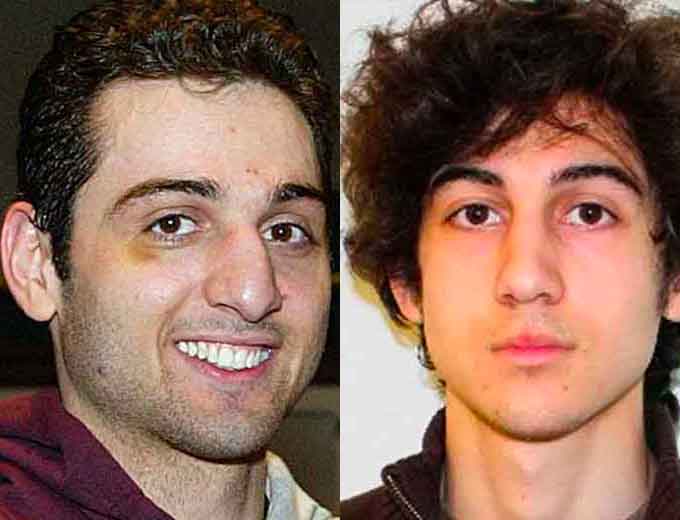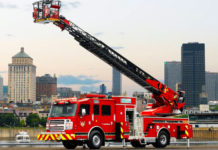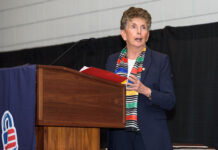
Guest OpEd by Dean C. Alexander, professor/director of the Homeland Security Research Program at Western Illinois University and author of the recent book Family Terror Networks (2019)
The horrific terrorist attacks in Sri Lanka this past weekend, which killed over 350 people and injured more than 500 others, included attackers and cell members from several family terror networks, including two sets of brothers, a father and his sons, as well as a husband and wife.
Unfortunately, this is not a new terror modality.
The phenomenon of family-linked terrorism (e.g., ISIS families, the Boston Marathon bombers, and the San Bernardino terrorists is an increasingly prominent feature of extremism.
(The way the Easter Sunday events unfolded shows a level of sophistication and coordination that resulted in one of the deadliest terror attacks in modern history. Courtesy of The New York Times and YouTube. Posted on Apr 23, 2019.)
My multi-year research on this topic, recently culminating in a book, Family Terror Networks, assessed various kin relationships (e.g., brothers, husbands/wives, and fathers/sons) embracing disparate extremist ideologies.
My analysis comprised 118 case studies of family connected terrorism involving 138 examples of kin relationships).
It found that of 138 family ties discussed in the cases fairly equal amounts of husbands/wives (43/138 or 31%) and brothers (36/138 or 26%) participation were exhibited.
These results are attributable to the bonds that coalesce during courtship and marriage.
The frequency of brothers in this volume underscores the potency of sibling relationships as well as the higher frequency of male participation in terrorism over females.
(Police testified about the night of the shootout with the Tsarnaev brothers, which ultimately led to the death of the eldest. Courtesy of CNN and YouTube. Posted on Mar 17, 2015.)
Three other sources of family-terror connections contributed about 25% or so of such instances, namely:
-
Fathers/sons (15/138 cases or 10.87%)
-
Cousins (11/138 cases or 7.97%), and
-
Siblings (other than sister-sister, brother-brother) (9/138 cases or 6.52%)
Overwhelmingly, jihadism was the ideology connected to the 118 instances of families affiliated with terrorism that were analyzed.
Jihadism was found in 85% of the cases with other precepts occurring comparatively rarely (15%).
The non-jihadists associated with kin terrorism were aligned with mostly right-wing radicalism (e.g., sovereign citizens, militia, and white supremacy).
(The United States is offering $1 million for information on the whereabouts of Hamza bin Laden, the son of Osama bin Laden and an emerging leader of al-Qaida. Courtesy of TODAY and YouTube. Posted on Mar 2, 2019.)
In light of this threat, I crafted a six-stage model for predicting the formation of family terror networks.
-
At Stage 1, a family member (F1) is exposed to a radical ideology and supports a movement associated with this extremist tenet.
-
During Stage 2, the family member (F1) approaches another family member (F2) or multiple family members (F3–4) about the possibility of following the extremist ideology.
-
At Stage 3, a family member (F2) or multiple family members (F3–4) accept, accept with reservations, or reject the extremist tenets of their family member.
-
In Stage 4, several options are conceivable.
-
F1 takes part in a terrorist act or otherwise supports the movement.
-
F1 and F2 carry out a terrorist attack or support the movement.
-
Alternatively, F1 and F2 may leave extremism.
-
Another path affords either F1 or F2 to remain enthralled by radicalism while the other’s support ends. F3/F4 may follow any of the paths of F1/F2.
-
-
During Stage 5, assuming F2 has left radicalism (or never accepted it initially), F2 may try to directly influence F1 to leave radicalism or indirectly do so by reaching out for aid from others (e.g., law enforcement, religious and civic communities, friends, etc.).
-
Alternatively, assuming F1 has left radicalism, F1 may pursue efforts to dislodge F2 from extremism along the same path mentioned in this stage.
-
-
At Stage 6, F1 may decide to: leave extremism, protest F2’s efforts, leave the premises (assuming they live together), cease communications with F2, attack F2, or pursue other actions.
-
Alternatively, F2 may decide to follow the same path mentioned in this stage.
-
Family terror networks are likely to remain prevalent for the foreseeable future. Belief systems advocating political violence exist in some families.
 It is natural to share enthusiasm about newly found ideology, including extremist tenets, with easily swayed family members.
It is natural to share enthusiasm about newly found ideology, including extremist tenets, with easily swayed family members.
The ability of family members to pressure others to support extremism remains strong.
The recent terror attacks in Sri Lanka are the latest example of family affiliated mass casualty terrorist incidents. Law enforcement must be countered family terror networks with proper tools.
More particularly, one must comprehend the nature and features of family affiliated terrorism; and concomitantly apply the six-stage model to predict the formation of possible family terror networks.
About the Author:
Dean C. Alexander is Director, Homeland Security Research Program and Professor, Homeland Security at the School of Law Enforcement and Justice Administration at Western Illinois University. Prof. Alexander’s teaching, research, and speaking activities encompass terrorism, security, and legal issues.
He has lectured in ten countries, including to law enforcement and military officials, including at the National Intelligence University, NATO’s Centre of Excellence Defence Against Terrorism, Illinois Statewide Terrorism and Intelligence Center, Oregon Fusion Center, Michigan State Police, Milwaukee Police Department, McAllen Police Department, and Northern California Regional Intelligence Center, among others.

Prof. Alexander’s professional experience includes executive, business development, and legal positions in the United States and abroad, including Chile, Israel, and the United Kingdom. He worked as a consultant to the World Bank, Organization of American States, homeland security firms, and investment companies.
Since publishing on terrorism in 1991, Prof. Alexander has written several books on the subject, including: Family Terror Networks (2019), The Islamic State: Combating the Caliphate Without Borders (2015), Business Confronts Terrorism: Risks and Responses (Wisconsin, 2004) and Terrorism and Business: The Impact of September 11, 2001 (Transnational, 2002).
Prof. Alexander has been interviewed by domestic and international media. Prof. Alexander is on the Advisory Board of Security Magazine. He was a founding Advisory Council member of the Marsh Center for Risk Insights, research fellow at the Chesapeake Innovation Center, and served on the Anti-Terrorism Advisory Council executive board for the Central District of Illinois
Learn More…
Finding Terrorists in Our Midst, by Author of ‘Family Terror Networks’
















